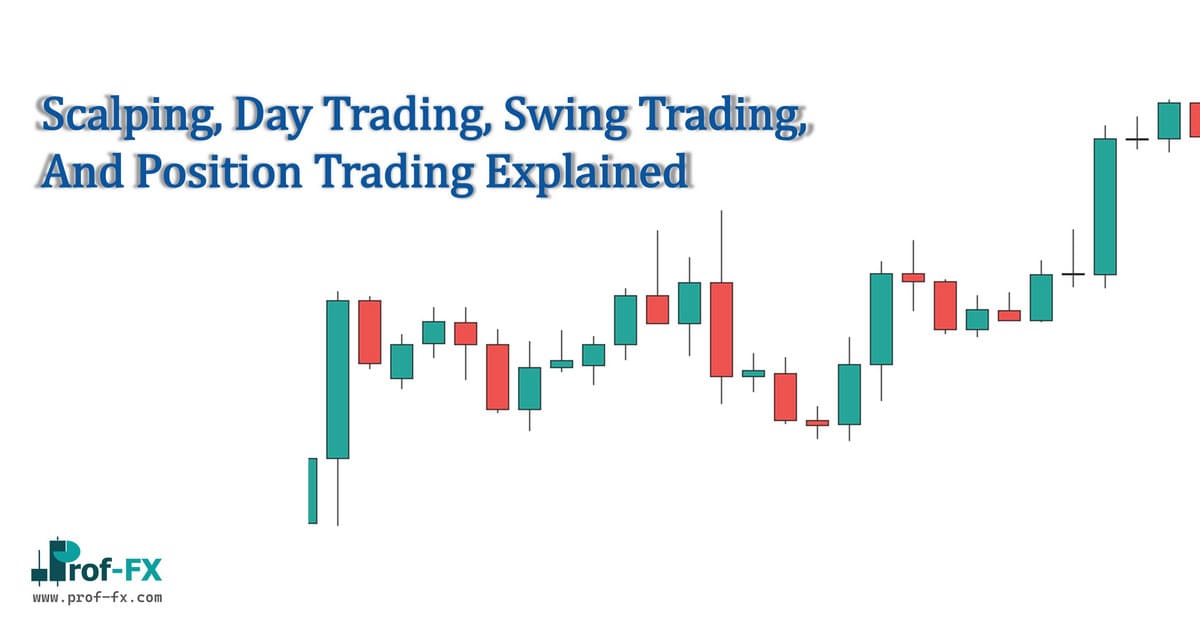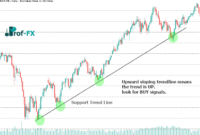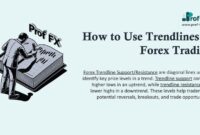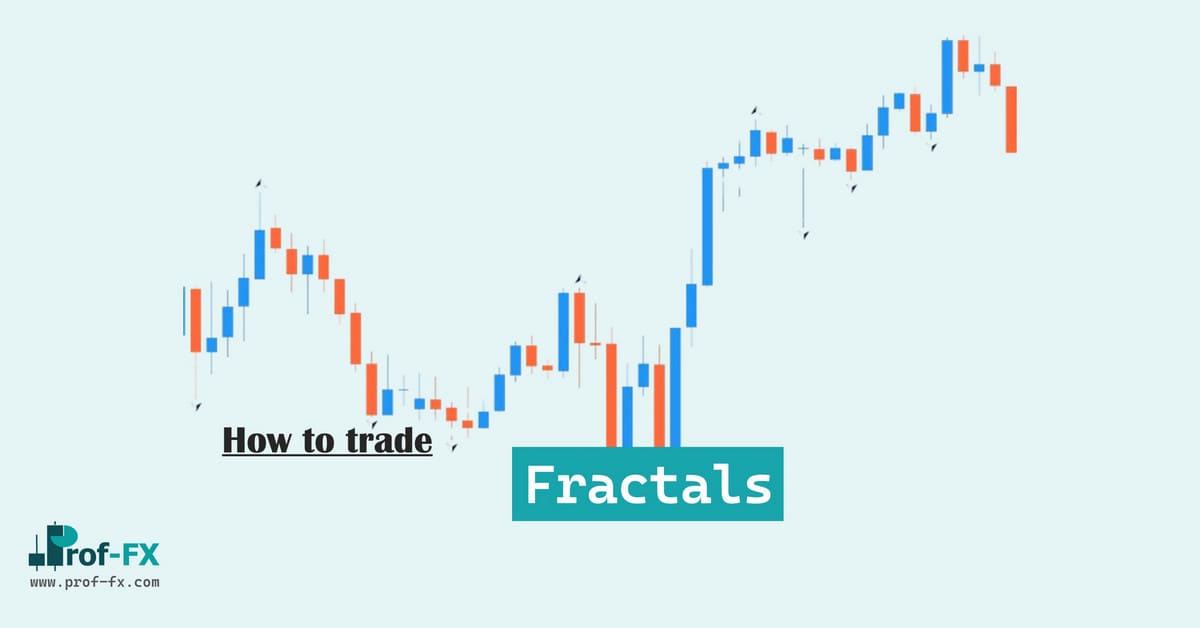Navigating the forex market can be a challenging endeavor for both novice and seasoned traders. Understanding various trading strategies is crucial for maximizing profit potential and minimizing risks. In this comprehensive guide, we will discuss four popular forex trading strategies: scalping, day trading, swing trading, and position trading. This article aims to help you make informed decisions and find the best approach suited to your trading style and goals.
Scalp Trading
Scalping is a fast-paced trading strategy focused on making multiple small trades in a short time frame, often within minutes or even seconds. Scalpers aim to capitalize on small price movements in highly liquid currency pairs. This approach requires intense focus, discipline, and the ability to make quick decisions. Scalpers often employ technical indicators and real-time news to identify entry and exit points for their trades.
Pros:
- Potential for quick profits
- Limited exposure to market risk
Cons:
- High transaction costs due to frequent trading
- Requires constant monitoring of the market
- Losses often exceed profits
Is Scalp Trading profitable?
Scalping can be profitable if executed correctly, but it requires a high level of skill, discipline, and risk management.
Types of scalp trading strategies
Trend-based scalping: Scalpers follow short-term trends in the market and enter positions in the direction of the trend. They aim to capitalize on small price movements and use tight stop-loss orders to minimize risk.
Breakout scalping: This strategy involves trading breakouts of support or resistance levels, typically using technical analysis tools like chart patterns or moving averages. Scalpers enter trades as soon as a breakout occurs and exit once the price moves a small distance in their favor.
News-based scalping: Scalpers take advantage of increased volatility around scheduled news events or economic releases. They enter trades as soon as the news breaks and quickly exit once the market absorbs the news and price movement slows down.
Day Trading
Day trading involves buying and selling currency pairs within a single trading day. Day traders typically hold their positions for a few hours, aiming to profit from intraday price movements. This strategy relies on technical analysis, chart patterns, and market news to make informed trading decisions.
Pros:
- No overnight risk
- Potential for consistent profits
Cons:
- Requires substantial time commitment
- Can be mentally exhausting
Is Day Trading profitable?
Like Scalp Trading, Day trading can be profitable, but it requires skill, discipline, and a solid understanding of market analysis and risk management.
Types of Day Trading
Range trading: Range trading focuses on identifying currency pairs that are trading within a defined price range, typically bound by support and resistance levels. Traders buy at the support level and sell at the resistance level, aiming to profit from the price oscillations within the range.
Trend following: In this strategy, traders seek to identify and follow the prevailing trend, either bullish or bearish, in the forex market. They use technical analysis tools, such as moving averages and trendlines, to determine the trend and enter trades accordingly.
Momentum trading: This strategy involves identifying currency pairs experiencing strong price movements and entering trades in the direction of momentum. Traders may use technical indicators, such as RSI, MACD, Stochastic Oscillator, or news catalysts to identify these opportunities.
Swing Trading
Swing trading is a medium-term trading strategy that focuses on capturing gains from price swings in the forex market. Swing traders aim to profit from short-term trends and typically hold positions for several days to a few weeks. This strategy relies on technical analysis, chart patterns, and market news to identify trading opportunities.
Pros:
- Less time-intensive compared to day trading
- Suitable for traders with limited time availability
- Potential for larger gains compared to short-term strategies
Cons:
- Exposure to overnight risk and weekend gaps
- Requires patience and discipline to wait for ideal trade setups
Is Swing Trading profitable?
Swing trading can be profitable for some traders, but like any trading strategy, its success depends on various factors, including the trader’s skill, knowledge, risk management, discipline, and overall market conditions.
Types of Swing Trading
Counter-trend Swing Trading: This strategy aims to capitalize on short-term price reversals within a larger trend. Traders look for overbought or oversold conditions, indicated by oscillators like the Relative Strength Index (RSI) or Stochastic Oscillator, to enter a trade in the opposite direction of the prevailing trend.
Fibonacci Swing Trading: This strategy is based on the use of Fibonacci retracement and extension levels to identify potential entry and exit points. Traders look for price reversals at significant Fibonacci levels, which are derived from key price swings, to enter trades in the direction of the larger trend.
Moving Average Crossover Swing Trading: This strategy involves using two or more moving averages with different timeframes to generate buy and
Position Trading
Position trading is a long-term trading strategy that involves holding positions for weeks, months, or even years. Position traders focus on the overall trend and aim to profit from large price movements in the market. This strategy primarily relies on fundamental analysis, macroeconomic factors, and long-term technical analysis to identify trading opportunities.
Pros:
- Requires less time and attention compared to shorter-term strategies
- Potential for significant gains from long-term market trends
- Lower transaction costs due to infrequent trading
Cons:
- Exposure to long-term market risks
- Requires substantial capital and patience to withstand drawdowns
Is Position Trading profitable?
This strategy usually relies on fundamental analysis, technical analysis, or a combination of both to identify and capitalize on significant price movements. Position trading has the potential to yield profits for traders; however, its effectiveness, like all trading approaches, hinges on numerous factors such as the trader’s expertise, knowledge, risk management practices, self-discipline, and market conditions.
Types of Position Trading
Carry Trade Position Trading: This strategy focuses on profiting from the interest rate differential between two currencies. Traders buy a currency with a higher interest rate and sell a currency with a lower interest rate, earning the interest rate differential as profit. Risk management is crucial in carry trades, as currency fluctuations can offset the interest gains.
Fundamental-based Position Trading: Traders using this strategy rely primarily on fundamental analysis to identify long-term investment opportunities. They examine macroeconomic indicators, central bank policies, and geopolitical events to determine the long-term direction of currency pairs.
Choosing the Right Forex Trading Strategy
Choosing the right forex trading strategy depends on a variety of factors, including your trading style, risk tolerance, and market knowledge. Some traders prefer the fast-paced nature of scalping and day trading, while others prefer the patience and discipline required for swing trading and position trading. It is important to choose a forex trading strategy that aligns with your goals and preferences and to continually refine and adapt your strategy based on market conditions and performance.
In conclusion, forex trading can be a profitable venture for those who are willing to put in the time and effort to learn and understand the market. By employing the right forex trading strategy, traders can generate consistent profits and achieve their financial goals. Whether you prefer scalping, day trading, swing trading, or position trading, make sure to approach the market with discipline, patience, and a willingness to adapt and improve.













